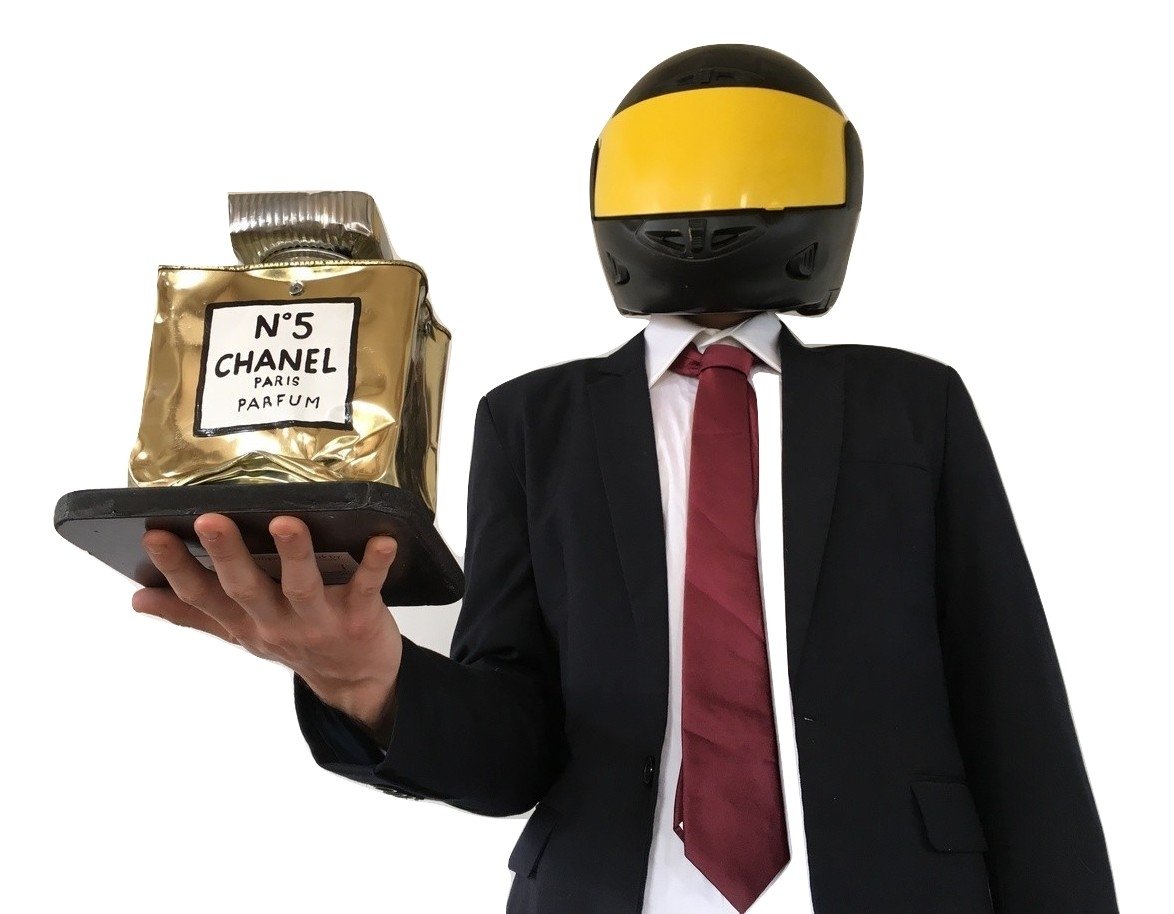An Eventful Conversation with Norman Gekko
Norman Gekko is a visual artist. By remaining anonymous, he allows all that view the art to view it as they see not a controlled perception. He has been exhibited internationally, with his most recent shows being at Galleria Restelliartco, Gallery 86, Stockholm. I had the pleasure of asking Norman about how he came up with the name, why he remains anonymous, and what type of music he listens to when creating.
UZOMAH: When did you start painting and sculpting?
NORMAN: I started painting 25 years ago, but there was a time when I couldn't paint on a flat surface anymore. The canvas started to become something boring. Sculpture first came from paintings that were composed of various objects and then painted. Then there was a moment when it was no longer enough, which made me switch to sculpture and volume.
U: What is the importance of staying anonymous and just focusing on the art?
N: The importance of remaining anonymous is linked to two elements: I wanted complete peace of mind and complete creative freedom. Then, I wanted to cut myself off from all elements related to travel, exhibitions, and everything more or less related to questions of communication, relations with collectors, and artistic institutions. I created the character of Norman Gekko to have this complete freedom and this complete detachment from the art world. Communication is me who controls it if necessary, and it is not imposed on me as such.
Courtesy of artist
U: How do you develop a piece of art? Do you have it in mind before you actually put creativity into your hands?
N: As I mainly work with ready-made, it is the already existing forms that will participate in the creation of a work. There is always a moment when an idea springs up, and we always wonder why this idea did not come sooner. To be an artist is to create this possibility between a form already there and what it will become. Sometimes the meeting never takes place.
Courtesy of artist
U: How does your name represent more of an idea than a name of a person?
N: Exactly. Norman Gekko is the combination of two characters that synthesize today's art world: "Norman" is the first name of the painter Norman Rockwell and "Gekko" is taken from the name of the character from the movie Wall Street. On the one hand, the meeting between art, advertising, and a form of hyperrealism for Rockwell. On the other, the essential meeting between contemporary art and money. Gekko is the combination of both. This relationship between money and art is essential. Rockwell also symbolizes for me the first and definitive shift of art into the world of advertising and communication. This shift will continue with pop art and the art of today. After Rockwell, there will be no turning back.
U: In your art, you parody western culture a lot. How does humor bring more effect and impact through the arts?
N: For me, the artist must either say something or just produce beauty. When he intends to say something with his art, be it an aesthetic or political manifesto, humor is a powerful tool. Sometimes it is possible to produce both in the same work of art: intellectually provoking content but also beauty. In this case, I think the artwork is successful.
Courtesy of artist
U: Can you explain the importance and role of satire in your artwork?
N: There is, at the heart of my work, an extremely satirical dimension. Satire is, for me, at the heart of my work, in that it questions essential elements specific to our consumer society. My work on the iconography of luxury, in particular, raises all the relationships that exist between art and consumption but also all its addictive and deeply superficial aspects. There is in humanity both a desire to believe and a desire for extreme simplification in certain forms, a kind of amorous crystallization in which the pleasure of seeing takes precedence over everything else. This work is important because I think that the Society of tomorrow, for example, with the growing importance of social networks, will become more superficial and dangerous. My work attempts to visualize using satire as the approach to this danger.
U: What type of music do you listen to? Do you listen to music when you create?
N: I listen to different styles of music. I myself am a guitarist. I work with music. It is decisive in my creative work.
For more information about Norman’s artwork, please visit his site.



